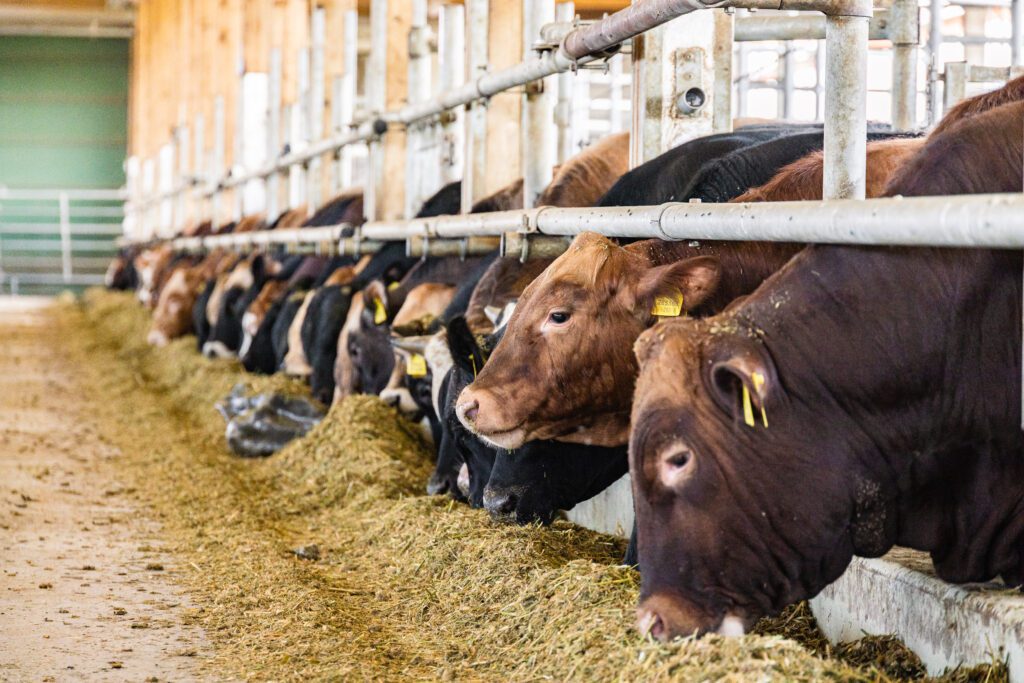Polk & Florida Cattle Ranchers Say Market Is Highest They’ve Seen
by REBEKAH PIERCE
The cattle industry in Polk County is a testament to the agricultural spirit and profuse grit of the people in the Sunshine State.
Through market fluctuation, land scarcity, and environmental challenges, the farmers and ranchers here have continued to rise to the challenge and enjoyed riding some of the highs.
The National Context
Ranking ninth in the nation for beef cattle production with 862,000 head of cattle, Florida has seen significant declines since last year.
This decline is not unique to Florida; the national beef cow herd has been on the downward trend, with all but one of the states in the top 10 seeing drops. (Kansas is the outlier here.)
Clearly, Polk County’s cattle are part of a larger national industry experiencing change.
The prices for 450-500 pound steers in Florida also reflect a market that’s been anything but stagnant. Seasonal price variations always come into play, but right now, Florida producers are seeing some of the most favorable prices they’ve ever seen.
“Recently,” says Kevin Fussell, president of the Polk County Cattlemen’s Association, “the market is the highest we’ve ever seen. No one knows how long it will last, but anyone who’s been in it very long knows it’s not going to be this way forever. Better enjoy it while it does and pay off some debt if you have any, and put a little away for a rainy day.”
Florida Cattlemen’s Association President Pat Durden explains the current conditions: “We are at a point in the natural cattle cycle where strong demand meets low supply, thus creating high prices.”
Factors Affecting the Industry
The cow-calf sector of the industry — where most Florida cattle producers are involved — is seeing favorable prices in the first part of 2024. This is a welcome boon, especially given the high cost of production.
This is a tale that’s truly as old as time. Feed costs, influenced by fertilizers costs, supply chain disruptions, and fuel costs, continue to impact cattle prices. This tends to be the most significant factor driving up the cost of livestock production, sometimes representing as much as 60 to 70% of production costs.
Inflation also feeds into a complex equation impacting pricing strategies and operational decisions. According to Fussell, this inflation’s not necessarily a bad thing when it comes to the calf market:
“These higher calf prices couldn’t have come at a better time. It costs more to raise a calf now than it ever has before. Input costs have gotten so high that we really need to see these prices stay around for a few years.”
A Notable Lack of Inventory
Amid inflationary pressures and the challenges related to managing input costs, the cattle market in Polk County is currently riding a high that’s fueled by low national inventory.
The supply of female cattle in production, including both cows and heifers, is limited, with several years of liquidation causing prices of replacement cattle to rise. In fact, prices for young, bred replacement females are 54% higher in Florida in 2024 than they were in 2022.
“Demand is very strong, both in the feeder calves and the slaughter cow/bull market. Prices softened up a bit last fall and early in the year, but the last month or so has seen a good rally in the market. The grass is green and the birds are singing,” says Fussell.
He also adds, “We just witnessed a multi-year drought the last couple years all across the West that saw a culling of cows to the lowest number this country has seen in 70+ years.”
Nevertheless, he’s optimistic. Building back the herds will happen, but it may be up to three years before the process of herd rebuilding allows inventory to build back up.
This lack of inventory means much fewer cattle going to auction, notes Dave Tomkow, owner of Cattlemen’s Livestock Auction Market in Lakeland.
Some of this is due to inventory trends, but other factors, like the changing format of marketing (including more direct off-the-farm sales), may also be playing a role, he notes.
“Less cattle means less supply, which puts those cattle that are available in much demand,” says Durden.
Land and Operational Challenges
The loss of agricultural land to urban development is another story that’s unfolding across the United States, with Florida taking an especially hard hit. The University of Florida’s report “Agriculture 2040/2070” projected a potential loss of up to 45,000 acres of agricultural land per year.
As a result, land is getting harder to come by and more expensive to rent. This is the biggest challenge faced by cattle ranchers in Florida, says Fussell, not necessarily drought.
Ultimately, the market highs pose unique challenges, and the industry is in the process of defining a new normal, where operational costs might remain elevated for the foreseeable future.
Yet veterans of the cattle industry know that highs and lows are only to be expected. And despite shrinking space and mercurial markets, the ranchers here continue to embody the resolve and grit that has long characterized American farmers.

